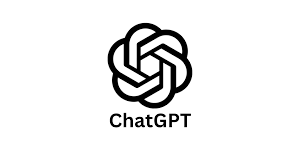ChatGPT is a product of OpenAI, a renowned research organization dedicated to ensuring that artificial general intelligence (AGI) benefits all of humanity. ChatGPT is a chatbot and it is a state-of-the-art language processing AI model, developed using a machine learning technique known as GPT (Generative Pre-trained Transformer).
Originally based on the GPT-3 model, and later on GPT-4, ChatGPT uses unsupervised learning to understand and generate human-like text. It was trained on a diverse range of internet text. The GPT models are fine-tuned with human supervision for specific tasks, but they don’t know specifics about which documents were part of their training set, and they don’t have access to any personal data about individuals unless explicitly provided in the conversation.
ChatGPT has broad applications across various fields including drafting emails, writing articles, answering questions, creating conversational agents, tutoring, translating languages, simulating characters for video games, and even crafting poetry. One of its major strengths lies in its ability to handle different conversational contexts.
Sample Prompts a Person can Ask ChatGPT:
- “What kind of tasks can you assist me with?”
- “How were you trained and what kind of data did you learn from?”
- “Can you help me draft an email?”
- “What are the ethical considerations associated with using AI like you?”
- “Can you tell me a story or write a poem?”
While chatbots have been around for a while, what sets ChatGPT apart is its advanced language model that allows it to generate highly coherent and contextually relevant responses. It’s equipped with a deep learning model, a subset of machine learning, which uses neural networks with several layers (hence the term “deep”). These neural networks attempt to simulate the behavior of the human brain—albeit far from matching its ability—in order to “learn” from the large amounts of data they’re fed.
ChatGPT can generate creative and nuanced responses, making it seem like you’re chatting with a human. But remember, it’s still a machine learning model and doesn’t understand or feel emotions. It can merely mimic human-like text based on the patterns it has learned during its training.
Importantly, ChatGPT doesn’t have the capability to recall personal data unless it’s shared in the course of the conversation, and it doesn’t store personal conversations or share them with third parties. It’s designed to respect user privacy and confidentiality.
However, as with any technology, it’s essential to consider potential misuse of ChatGPT. Its ability to generate human-like text could be exploited for malicious purposes, such as spreading misinformation or phishing. OpenAI has implemented usage policies and safety mitigations to address these concerns and continues to refine and develop these measures based on user feedback and needs.
In conclusion, ChatGPT is a remarkable manifestation of the advancements in AI. Its sophisticated ability to understand and generate text has wide-ranging applications from easing our daily tasks to transforming business operations. It exemplifies the potential of AI to be a powerful tool that, when used responsibly, can significantly augment human capabilities and efficiency. As we move forward, we must navigate the ethical and societal implications of such technology with care and diligence to maximize its benefits for all.












